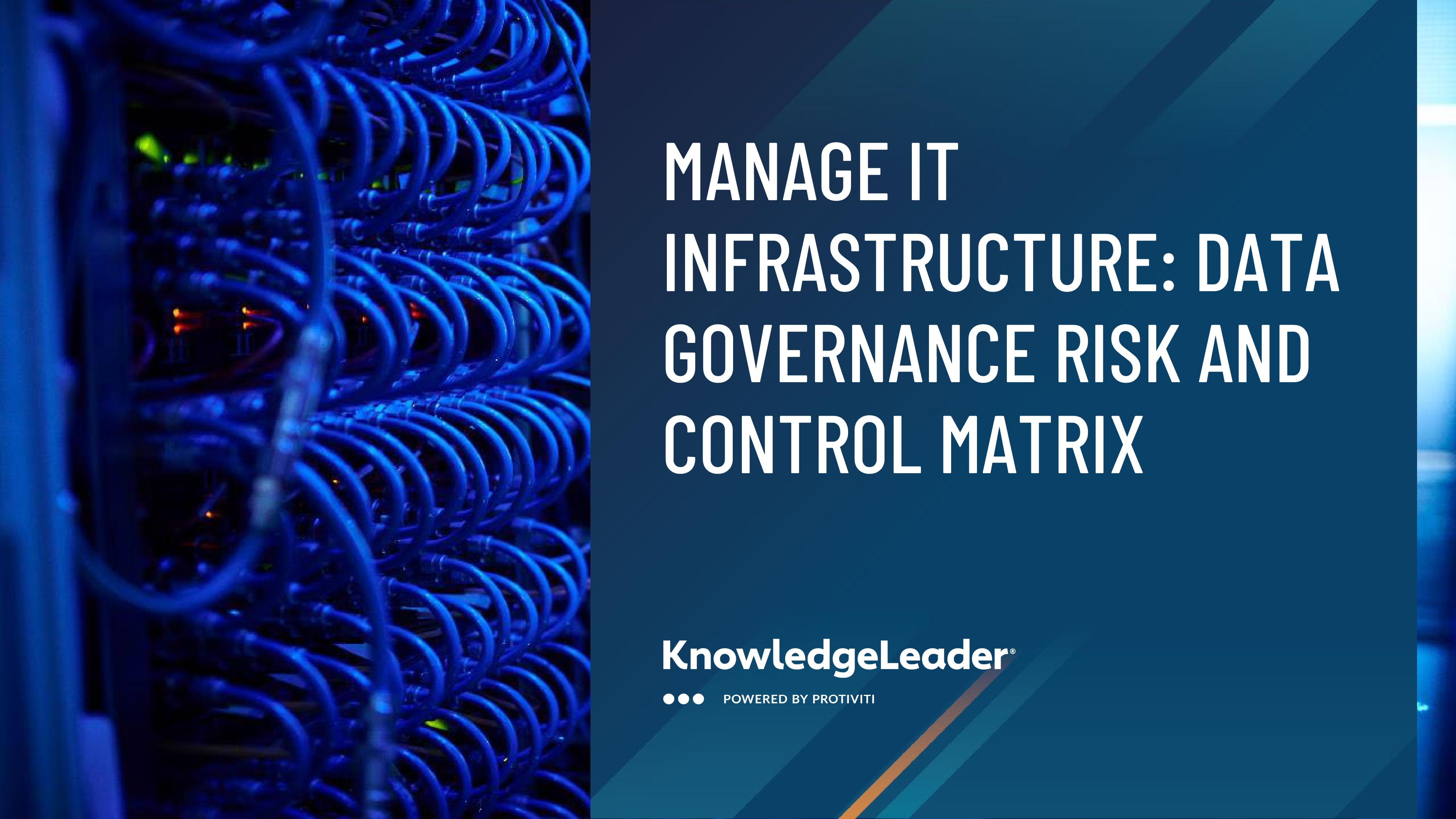Manage IT Infrastructure: Data Governance Risk and Control Matrix (RCM)

Identifying and Managing Data Governance Risks
A successful risk management strategy requires a strong internal control environment. The risk control matrix (RCM) format emphasizes that strong and risk-oriented internal control environments are often optimized with automated/manual controls, depending on the situation.
An RCM provides an overview of different control objectives that organizations should take into consideration and the corresponding controls to safeguard the company against risks, which may arise if not checked timely. Once customized to an organization, this document can help the user in assessing each control. The control assessment can then also be summarized to develop an action plan.
This document outlines risks and controls common to the Manage IT Infrastructure process in an RCM format.
Sample risks include:
- A defined enterprise data model does not exist, does not take into account business requirements or is not approved, resulting in data architecture that is not suitable to meet the needs of the organization.
- Appropriate data governance roles and responsibilities do not exist to support the strategic alignment between the data management function and the business as a whole.
- Data assets are not valued appropriately, resulting in misreporting the organization’s financial position, poor management decision-making and underestimating the business impact of data loss.
- Data management projects are not appropriately managed, resulting in a lack of project prioritization, potential misallocation of funds and suboptimal decision-making.
This document can be used as a sample RCM and is not meant to be an exhaustive list of risks and controls. The KnowledgeLeader team will periodically update this RCM with new content. Organizations should select, update and modify the risks and controls included in this document to ensure that it reflects business operations.